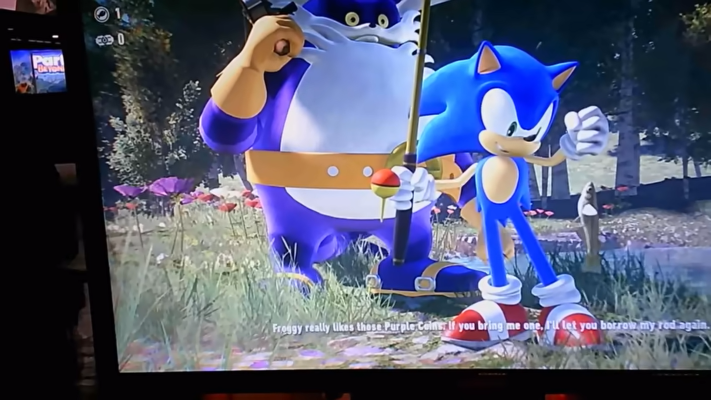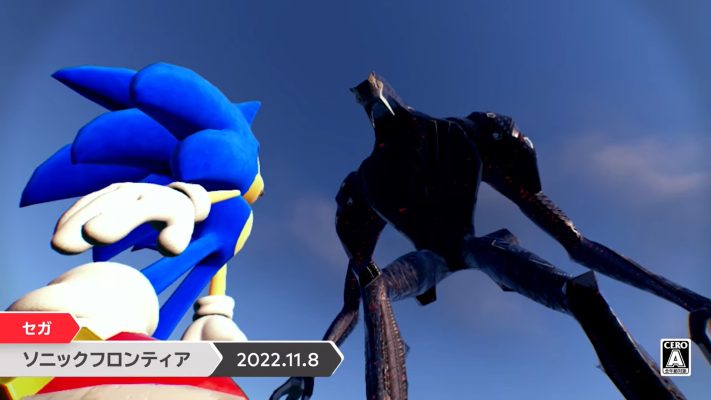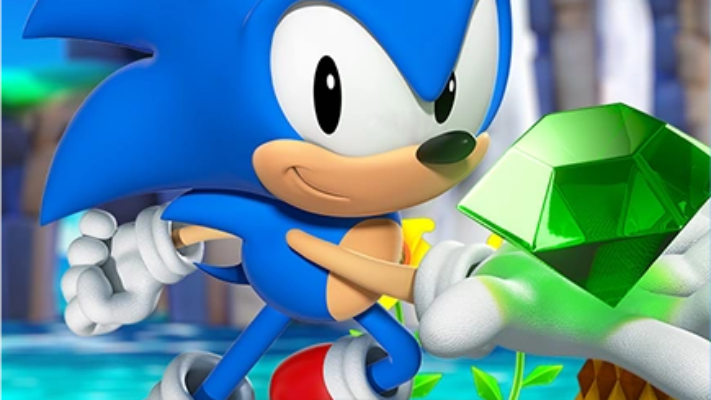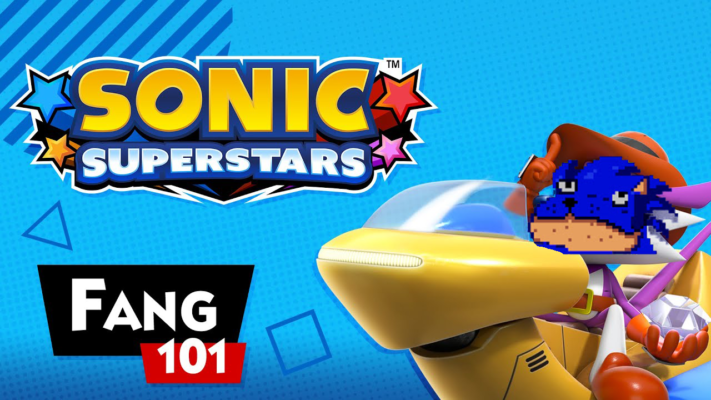The Tokyo Game Show 2023 (TGS) was held over four days from September 21, and at the Sega/Atlus booth, it was possible to try out Sonic Superstars, which is set to be released on October 17.
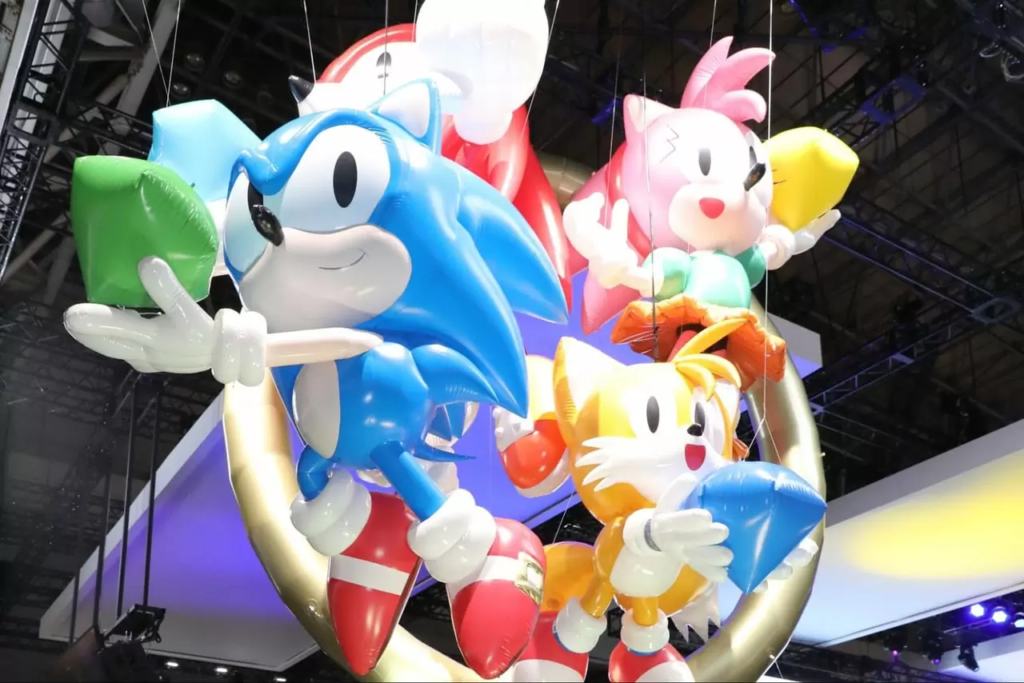
This latest work in the series is a “Classic Sonic” with greatly improved graphics and systems while retaining the action unique to Sonic.
Developer interviews were held for the media at the TGS venue, and we had the opportunity to speak with Takashi Iizuka, the representative of Sonic Team, and Naoto Ohshima of ARZEST, the development producer. Ohshima-san was in charge of Sonic’s character design and is, so to speak, the “creator” of Sonic.
In this article, we will introduce the interview that took place at the TGS venue, including the two’s involvement in the production site, the evolution of Sonic, and the level design that gives you Sonic’s “sense of speed.”
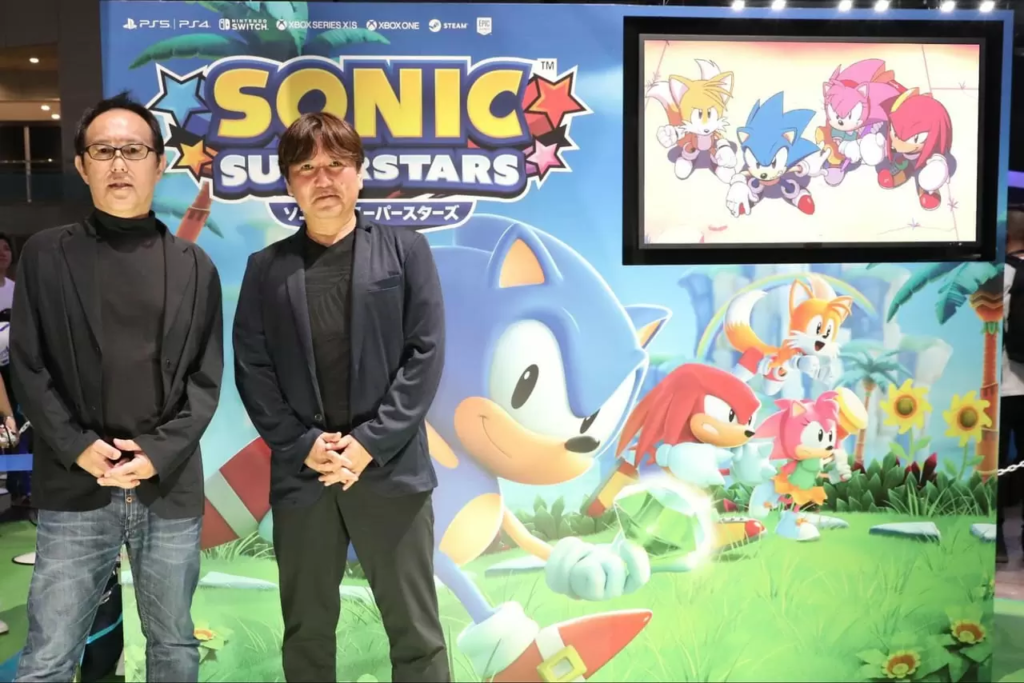
Interviewer/Keigo Toyota
Text/Marie Yanamoto
The Birth of Sonic the Hedgehog
──Now that Ohshima-san is here, we would like to hear about the background of the birth of the character Sonic, of course, in addition to the story about Sonic Superstars.
Ohshima:
It’s difficult to give a brief explanation, but I joined Sega as a designer and was assigned to a department where I drew pictures and punched dots. But what I really wanted to do was “game design” that thinks about games.
Iizuka:
At Sega, we call designing games “planning” and drawing pictures and punching dots “design.” In some parts of the world, the planning position is called “designer.” Ohshima-san was mistaken, and he wanted to do the planning job of thinking about games, but he ended up in the design job of punching dots.
──I see. Ohshima-san, you wanted to do planning rather than artistic things, which means you wanted to create something from scratch.
Ohshima:
Yes. I had been designing for about three years while wanting to do planning. So, when I was finally allowed to do planning, I formed a team. At first, the characters and gameplay were completely different from Sonic, but later it became Sonic the Hedgehog.
Officially, it’s ‘Character Design = Ohshima,’ but the truth is, I also create maps, and I’ve designed almost all the bosses in ‘Sonic the Hedgehog’ as well.
──Oh, really? I didn’t know that!
Iizuka:
Yes, loops and pinball elements also originated from Ohshima-san.
──That’s surprising! By the way, it’s often said that “Sonic was created as a character to compete against Nintendo’s Mario.” Is this also not entirely accurate?
Ohshima:
Rather than specifically to compete with Nintendo, it came about because the company president at the time liked the character. I transitioned to Sega from the advertising industry. Being skilled at presentations, I created samples of Sonic plush toys and stationary goods beforehand and presented them to the president. It was not just about the game but also about showcasing potential developments.
As a result, the president appreciated the presentation, stating ‘I’ve never seen this type of presentation before.’ This led to Sonic being accepted as Sega’s mascot, starting from the president’s fondness for the character.
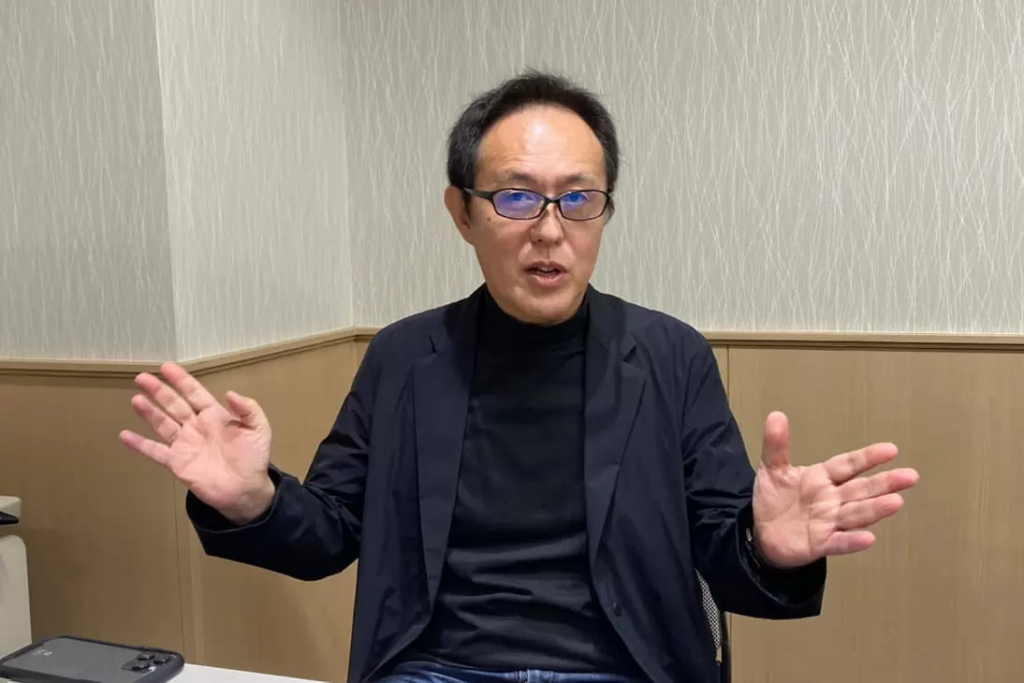
──It’s often said that “Sonic is blue because Sega’s logo is blue,” but…
Ohshima:
While that’s part of it, the main reason is that blue was the trend color in the fashion industry that year. It was an era emphasizing earth tones and ecology, embodying wishes like ‘May the sky always remain beautiful blue.’
Additionally, blue carries the connotation of ‘cool.’ However, back then, the concept of cool wasn’t necessarily the same as being stylish…
Iizuka:
In Japan at the time, ‘cool’ was misunderstood as ‘sophisticated’ or ‘composed,’ a misinterpretation of the English word by the Japanese.
Ohshima:
Hence, in Japan, ‘cool = stylish’ began with Sonic, I believe.
──Is this story about Sonic being established as Sega’s mascot character?
Ohshima:
Yes, that’s right. Also, regarding the character, Sonic is depicted as someone who can’t stay still and takes immediate action. Acting before thinking isn’t a common approach for Japanese people; this was more of an ‘American image’ from a Japanese perspective.
──Right. So, it gained popularity in the West because it was perceived as an American-style character from a Japanese perspective.
Iizuka:
It was a significant factor that it was originally designed as a character suitable for the Western audience.
Ohshima:
We had various character proposals within Sega. When we were struggling to decide which character to choose, there was a timing when I happened to visit New York. I set up panels with illustrations of candidate characters and conducted a popularity vote among people passing through Central Park, asking them, ‘Which character do you like?’ Sonic happened to be the most popular among them*. Based on that result, we decided to go with this character.
*Editor’s note: By the way, the character that ranked second in this popularity vote was a bearded old man, who became the prototype for Sonic’s archenemy, “Dr. Eggman.”
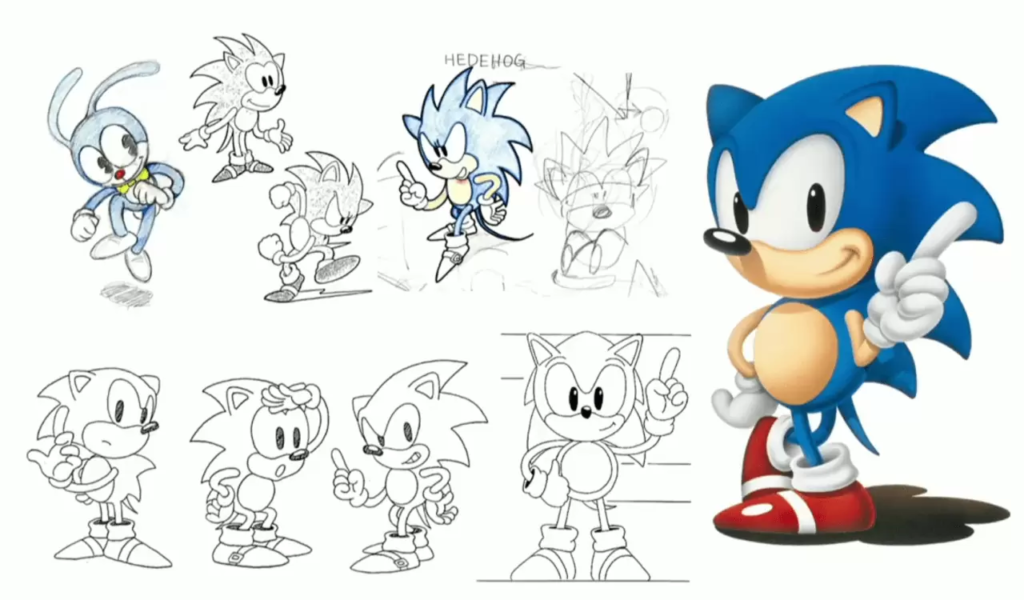
──Where did the idea of a hedgehog come from?
Ohshima:
At that time, we didn’t know what the final game would be like. We had initially designed a rabbit character capable of throwing items using its ears. Then, the idea shifted to creating a character that could roll and attack with speed. I thought, ‘If it becomes ball-shaped, it will be invincible,’ considering hedgehogs have spikes. With spikes on its back, it appeared as though it was running fast, and I felt it had good compatibility with the game. However, I didn’t know much about hedgehogs when I created Sonic, so I was surprised when I saw a real one later on (laughs).
──In terms of design, everything was hand-drawn back then, rather than being created on computers.
Ohshima:
Yes, it was all done by hand. Also, during the initial stages of development, it wasn’t Sonic but the rabbit character I mentioned earlier that we were working on.”
Iizuka:
In the ‘Sonic Superstars: Digital Deluxe’ edition, there is a skin for the character ‘Rabbit,’ which was a prototype created by Ohshima-san before the birth of Sonic.
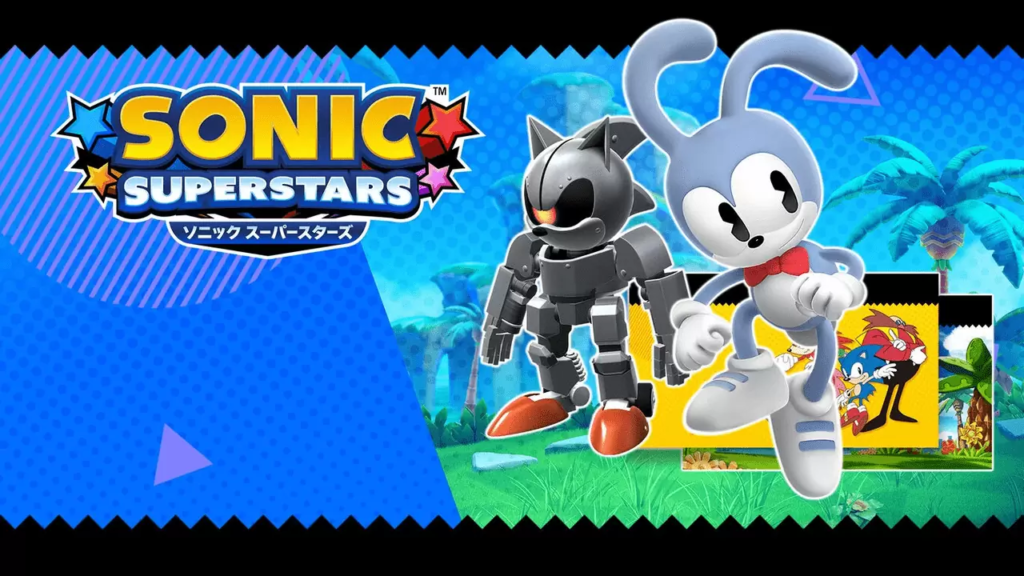
──“Wow! That’s here!” It’s a skin that’s stirring excitement among longtime SEGA fans (laughs).
The Representative of Sonic Team Participates as a “Key Member” in the Field.
──How many years has it been since Ohshima-san left Sega and you two worked together?
Iizuka:
I counted, and it’s been 25 years. I think the last time I worked with Ohshima-san was during Sonic Adventure.
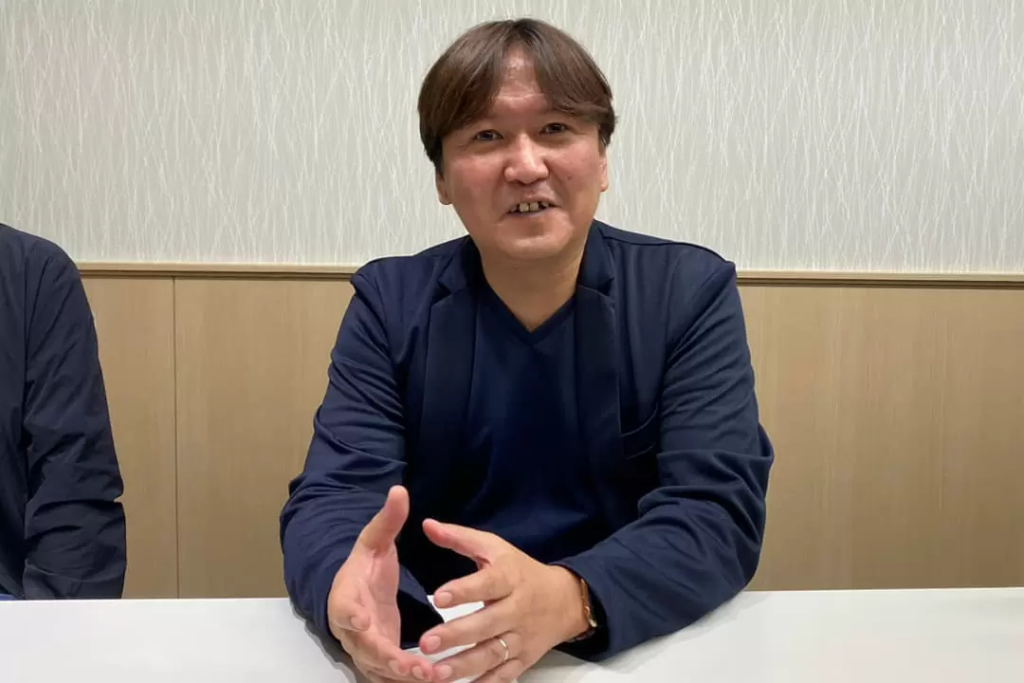
Ohshima:
It didn’t feel like it had been 25 years. I believe there’s a compatibility factor when working with a partner. Whenever I exchanged opinions with Iizuka-san, it always ended up being a positive experience, so I consulted with him whenever I faced a challenge.
Iizuka:
For Sonic Superstars, the content was mostly determined by Ohshima-san and me. Though both Ohshima-san and I found it difficult to be on-site, this time, we were involved as key members of the team.
──If the representative of Sonic Team, Iizuka-san, is actively involved on-site as a key member, the younger generation seems likely to learn a lot.
Iizuka:
Even for something as simple as placing rings, I’ve been offering guidance like, ‘It’s better to put them like this’ (laughs).
──I didn’t expect that Iizuka-san would be offering guidance even on how to place rings.
Iizuka:
Regarding Classic Sonic, there’s no one left from the team that worked on level design except for me. So, I think it’s good that I got involved on-site to pass on knowledge to the younger generation.
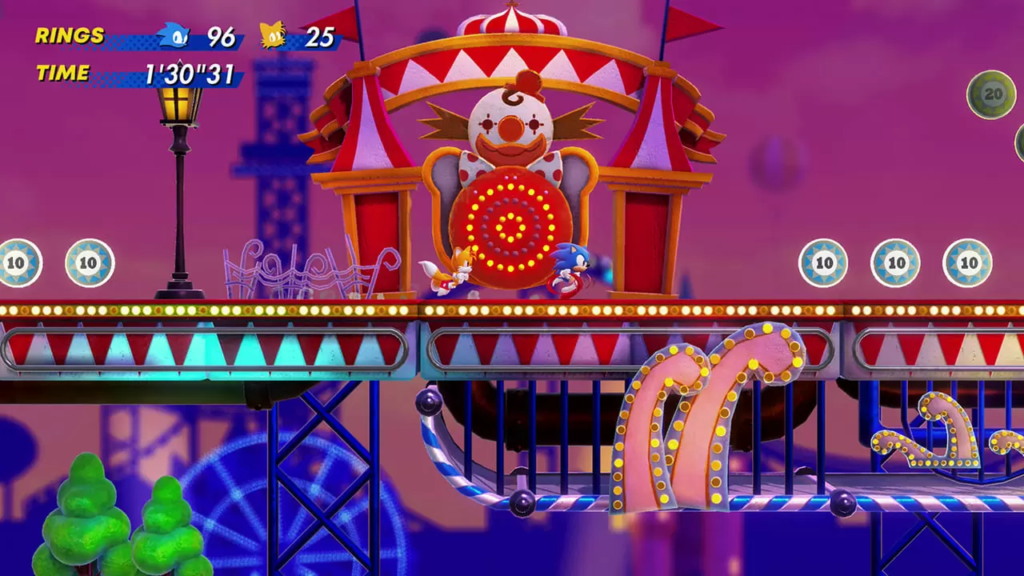
──I would like to ask about that knowledge. In terms of level design, what aspects or considerations are essential or focused on for Sonic?
Iizuka:
Well, Sonic is known for being fast and exhilarating, right? However, the sensation of ‘speed’ is not easily felt if he’s just running straight on a fast track.
──True, it might be difficult to sense speed if Sonic runs at the same pace continually. Does this mean there’s a ‘level design to evoke speed’?
Iizuka:
Yes, that’s right. It’s about the ‘ups and downs.’ Sonic isn’t always running at high speed. It’s the variety introduced by different gimmicks that creates fluctuations in pace.
──Exactly. It’s the variation in pace that allows you to truly feel the speed during those high-speed moments.
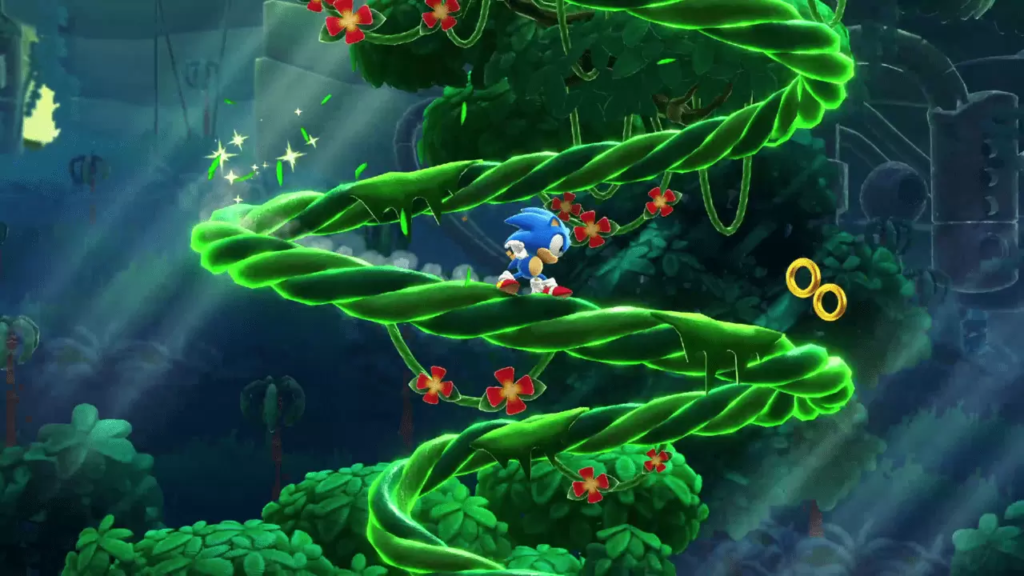
Iizuka:
Also, we consider how to maintain that speed without hindrance from walls or obstacles, thinking about how to smoothly connect different sections. I’ve been sharing that knowledge and, in the latter part, the team members also understood and came up with various ideas.
We always aim to explore new things with stages and gimmicks. In “Cyber Station,” for instance, we implemented the idea of “becoming a jellyfish.”
We Want to Update Classic Sonic in 3D Rather Than Using Pixels
──Sonic has changed in design and color over time. How did Ohshima-san feel about Sonic’s design changes?
Ohshima:
I’m someone who’s interested in new things, so after creating Sonic, I entrusted character design to reliable team members. That’s why Tails, Knuckles, Amy, they all have different designers. There are plenty of talented people at Sega, so I had no worries at all.
──With the 4-player multiplayer, Sonic, Tails, Knuckles, and Amy are available characters. How were the playable characters decided upon?
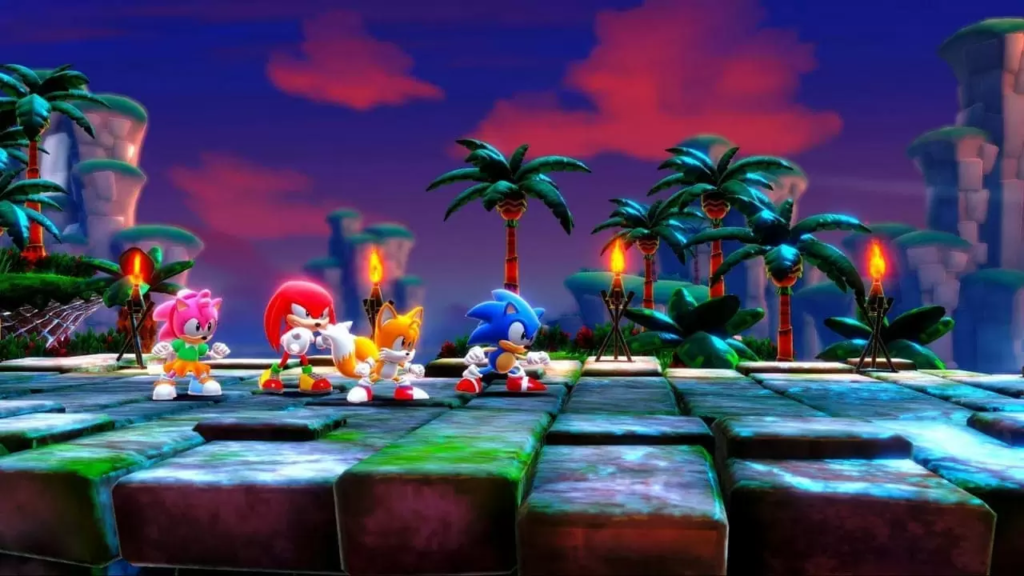
Iizuka:
Tails and Knuckles have fought alongside Sonic previously, but Amy has been an NPC rescued by Sonic. For years, there had been fans wanting to play as Amy. This time, we were able to respond to those requests. Amy has a wide attack range with her hammer action and can perform a double jump, making her recommended for beginners.
──In 2017, Sonic Mania introduced new elements for Classic Sonic, and in 2022, Sonic Frontiers showcased the cutting edge of Modern Sonic. And now in Sonic Superstars, we’ll be seeing Classic Sonic depicted in 3D. Could you share more about the positioning and the inception of this project?
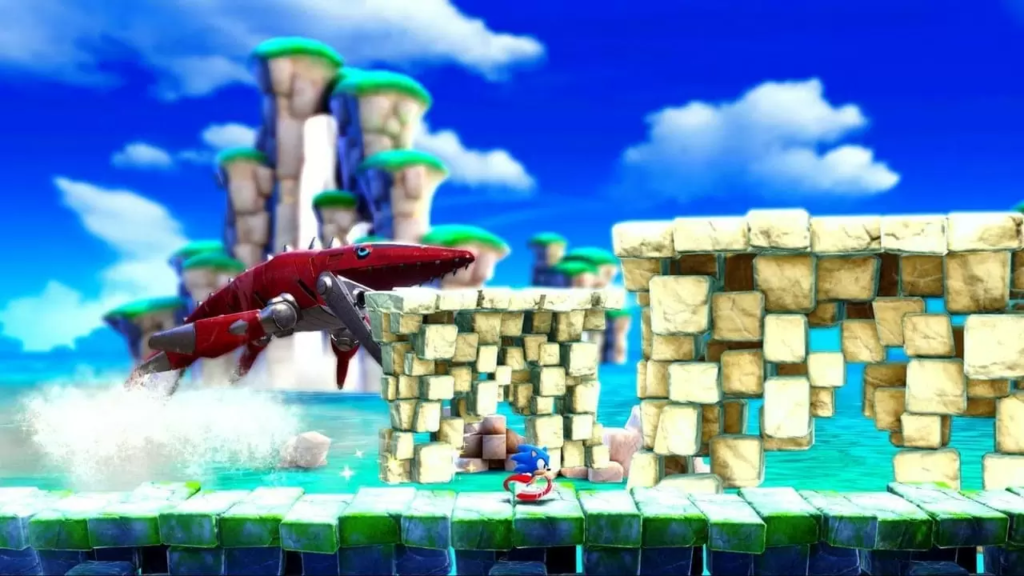
Iizuka:
We wanted to update Classic Sonic in 3D rather than in pixel art. I believe that one of the factors that garnered support for Sonic Mania was the appreciation for the work done by a Sonic enthusiast named Christian Whitehead*.
So, for Sonic Superstars, we thought about asking Ohshima-san, who is Sonic’s creator. It all started with casual conversation, and once we got the green light from him, things fell into place.
*Christian Whitehead:
A game programmer known for being a huge Sonic fan and for creating unofficial Sonic remakes. He was involved in the development of Sonic Mania.
── So, even after Ohshima-san left Sega, you maintained a close relationship?
Ohshima:
Yes, that’s correct. When I traveled to America, I’d reach out to Iizuka-san, and we’d have meals together locally.
Iizuka:
And when I returned to Japan, I’d also contact Ohshima-san (laughs).
──Ohshima-san, what did you think when Iizuka-san approached you with the idea of “Let’s make Classic Sonic together”?
Ohshima:
“I can now repay the fans,” was what I thought. This is because I still receive messages from Sonic fans on social media, and I’ve always wanted to express my gratitude to them.
──Ohshima-san’s comeback was probably the ultimate surprise for the fans. You mentioned earlier that working together after 25 years was quite something. What were the initial discussions like? Were there any differences in opinions, for instance?
Iizuka:
Regarding that, Ohshima-san suggested, “Since this is a completely new creation, maybe we can renew the player’s behavior.“ However, from my perspective, I strongly felt the need to ensure that those who had played the older Sonic games wouldn’t feel any discomfort while playing in 3D. We started from there, working to unify those gaps.
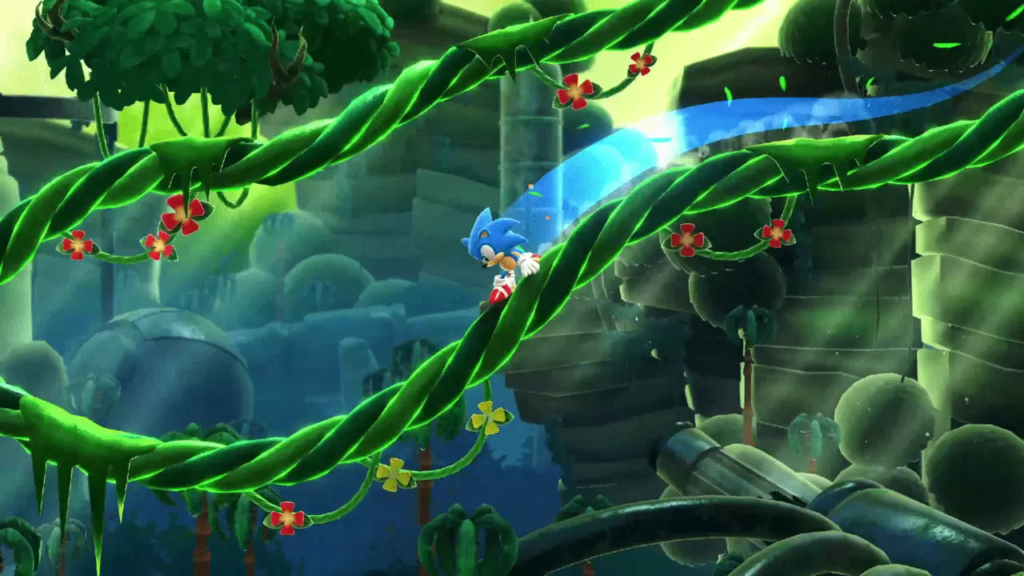
Ohshima:
Whenever I tried to do something strange, I got told, “Please stop that,” (laughs).
Iizuka:
Ohshima-san came up with numerous ideas. Sometimes, we had to say, “Isn’t that a bit too much!?” (laughs).
──For instance, what happened?
Ohshima:
The opening scene when starting the game actually differs depending on the chosen character. Each character has a different way of beginning their adventure. So, we did it that way. But since the prologue only appears once, if you miss it, you won’t see it again.
──So, you’re doing something that people might not notice at all, but it actually takes a tremendous amount of work (laughs). I think that aspect should be highlighted more (laughs).”
Iizuka:
Well, you know, I just love doing it (laughs).
From the Decline of the Sonic Brand to the Present Day
──It was exhibited at gamescom and Summer Game Fest, how was the response overseas?
Iizuka:
Everyone was very pleased, and in Europe and America, interviews began with the first words being, “Classic Sonic! Thank you!”
──(laughs). What kinds of questions did you receive from foreign media?
Iizuka:
The impression I got was that overseas, many were concerned about the difficulty level. Questions often revolved around whether the game offers a good challenge or not.
Especially at events like gamescom and Summer Game Fest, where we could only showcase the first two stages, the difficulty level might have seemed low, leading to such inquiries.
Translation:
──TGS was a huge success, wasn’t it? Congratulations on winning the Future Award. Sonic Frontiers also received the Excellence Award in the Annual Game Division at the Japan Game Awards 2023. Including the success of the movie, I feel that there has been a growing “Sonic fever” in recent years.
Iizuka:
I was assigned to the United States about 8 years ago, and at that time, the Sonic brand was struggling. The Sonic Team has finally come together, and what we had been preparing for has started taking shape, leading to the results we’ve seen in recent years.
──Finally, could you please share a message with the readers who are eagerly awaiting the release?
Ohshima:
Thanks to the support of everyone who has cheered for Sonic, I was able to be involved in development once again. It will be released on various platforms, so please give it a try. It runs at 60 frames per second even on the Nintendo Switch, so you can enjoy smooth gameplay. For longtime fans, I believe you’ll feel nostalgic for the characters, and for those playing for the first time, I hope you’ll experience Sonic’s speed. Give it your all and run as fast as you can.
Iizuka:
Sonic Superstars is scheduled for release on October 17th. It supports multiplayer, so try playing it with your family and friends. My recommendation is the Digital Deluxe Edition, which offers content well worth the price.
Additionally, although it’s a different title, the free major update, the third installment “Super Final Battle” for Sonic Frontiers, will be available from September 29th. Enjoy the new scenario where Tails, Knuckles, and Amy become playable characters.
Sure, here is the translation:
──Sonic fans, we hope you clear the new scenario of Sonic Frontiers by October 17th and then proceed to enjoy Sonic Superstars as well. (End)

Through the interview, what stood out was the involvement of the two in the production process. No one would have expected Iizuka-san to personally instruct even on the ‘placement of rings.’
Furthermore, the level design that creates the sensation of Sonic’s speed is intriguing. Certainly, the variations in pace accentuate the feeling of speed. It’s these nuances that seem to contribute to Sonic’s exhilaration.
Sonic Superstars is scheduled for release on October 17th for Nintendo Switch, PS4, PS5, Xbox One, Xbox Series X|S, and PC (Steam, Epic Games Store).
Source: denfaminicogamer
Discover more from Sonic City ⋆★ Sonic the Hedgehog News, Media, & Community ★⋆
Subscribe to get the latest posts sent to your email.


